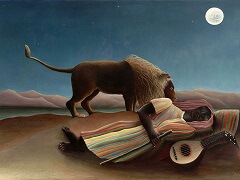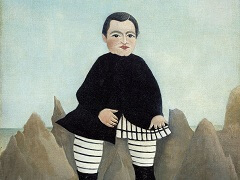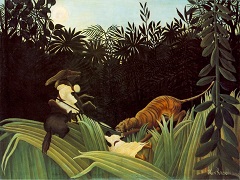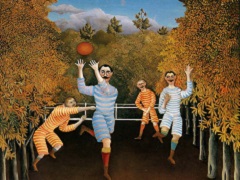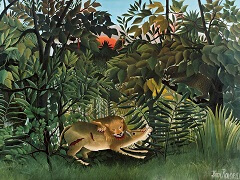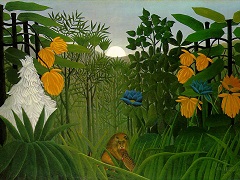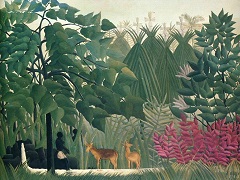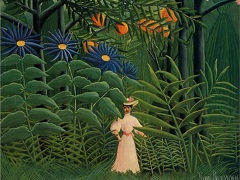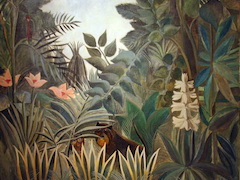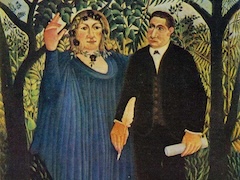The Hungry Lion Throws Itself on the Antelope, 1905 by Henri Rousseau

The Hungry Lion Throws Itself on the Antelope is created by Henri Rousseau in 1905. Following Scouts Attacked by a Tiger the previous year, The Hungry Lion was the second jungle painting to mark Rousseau's return to this genre after a 10-year hiatus caused by the generally negative reception to his 1891 painting Tiger in a Tropical Storm.
The Hungry Lion features in a jungle scene of thick green foliage lit by a deep red setting sun. In the foreground, a lion bites deeply into the neck of an antelope. Other animals are visible in the dense undergrowth: a panther watches from the right, an owl stares out of the background holding a bloody strand of meat in its beak in the centre, with a second bird to its left, and dark ape-like shape with gimlet eye lurks to the left.
Henri Rousseau, alongside with young painters Henri Matisse, Andre Derain, and Maurice de Vlaminck, whose explosive color and bold brush strokes led one critic to describe this landmark exhibition as the "cage aux fauves" (cage of wild beasts). This epithet gave rise to the term "fauvism," still used today to describe the early work of Rousseau's young colleagues. Though Rousseau was never considered a fauve, his scene of jungle savagery amid their avant-garde pictures perhaps inspired the name and certainly tied Rousseau to the young generation of progressive artists.

